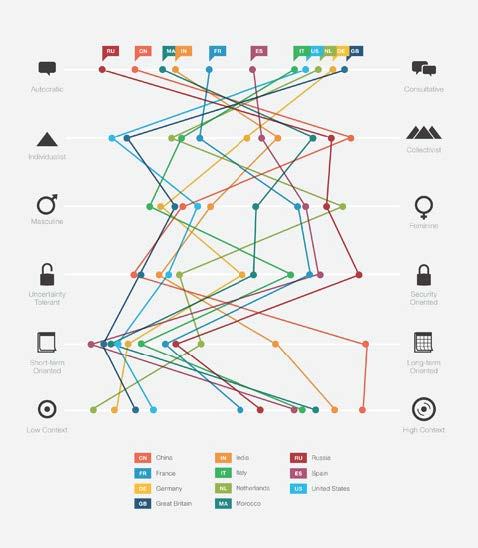
When a company expands overseas, much thought needs to be given to the culture in which you are setting up your new office. Mistakes in workplace layout and environment can sap local productivity quickly.
Steelcase, an office furniture company headquartered in Grand Rapids, Michigan, takes workplace culture very seriously. They’ve spent years studying culture’s effect on workplace layouts around the globe according to these six ranges:
Autocratic versus Collaborative
Individualism versus Collectivism
Masculine versus Feminine
Tolerance for Uncertainty
Short versus Long Term Outlook
Low or High Context
When working together, cultures range from autocratic with minimal communication and collaboration to consultative where employees take initiative and participate in making decisions. In Russia, departments tend to be segregated and employees have little access to executives. At the opposite end of the scale, the open doors of British executives are an invitation to interact with employees.
Americans, clearly from an individualist culture prefer flexible work environments tailored to individual needs. In China, part of a collective culture, workers are more comfortable in densely arranged workstations. In India and Russia as well, employees are unaffected by density and prefer hierarchy. In these cultures, work space is reduced for low level employees while executives and managers have plenty of room. Common working space is non-existent or when present, very bare bones.
Masculine cultures favor achievement and competition. For example, in Italy, assertive and competitive corporate cultures value symbols of hierarchy like private offices and play down collaborative spaces. In The Netherlands, feminine elements of cooperation and harmony are favored and fluid workspaces encouraging equality and well-being are created.
Brits take challenges as they come are comfortable with unpredictable situations and prefer workspaces centered around sharing and creative thinking. Spanish workers tend to be uncomfortable with uncertainty and prefer detail and structure. They are careful about sharing information and prefer to deliberate at length before making any big changes.
In the US, allowing for quick innovation is key and workspaces tend to reflect that allowing for fast switches between individual and collaborative work. China, where work space represents a company’s history, values and rituals, takes the longer view. Executive offices are symbols of tradition and long-term stability.
How we get our point across at work is highly culture based. Low context Germans prefer honest and straightforward communication delivered however necessary. Office space here should have lots of whiteboards and information-sharing tools. High context countries like India and China use a lot of indirect communication. In this case, tools like video conferencing that accommodate visual cues like seat position and body language help build understanding and consensus.
When creating workspace overseas, or even locally, be mindful about the culture in which the space exists. Designing office space suitable for the local culture creates a sense of trust with local employees resulting in happier social dynamics and better productivity. Steelcase 360 Magazine, Issue 65The Same But Different: Mapping The Patterns of Work Cultures Sherry Dineen
